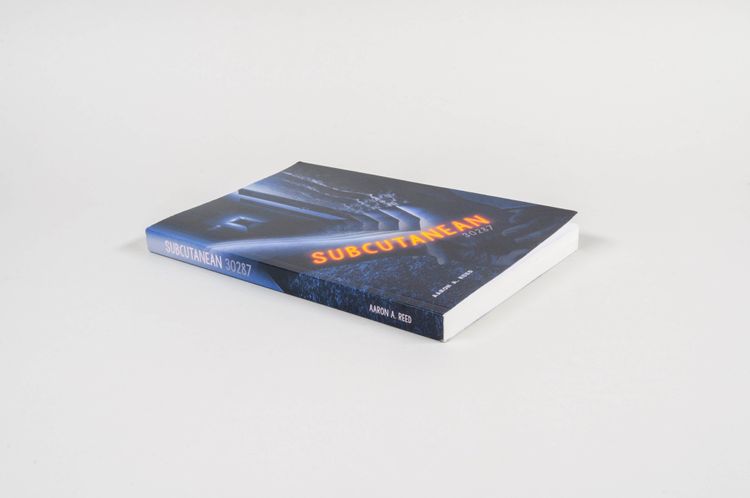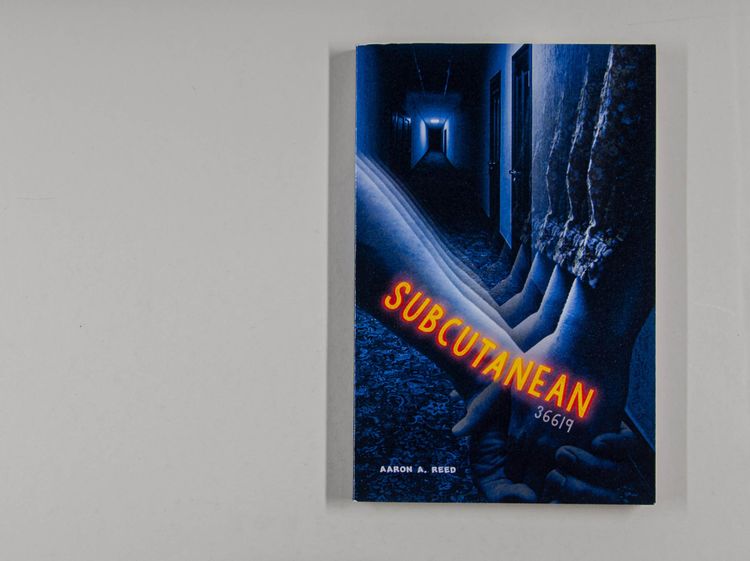Aaron A. Reed’s Subcutanean is a queer multi-branch horror novel evolving around the two protagonists Niko and Orion getting trapped in the endlessly multiplying basement of their house. The novel is published in copies with unique content in each, the text being algorithmically pulled from a huge pool of paragraphs and word choices: “The master text contains hundreds of places where words, sentences, even entire scenes can play out in different ways” (Aaron A. Reed, “Subcutanean,” website). However, the content is still concepted in a way that each variation makes sense and can be read as a unique version of the same story, with important cornerstones of the story remaining more or less the same.
In that sense, Subcutanean might not only be called queer in content but also on a conceptual level, due to its fluidity and multi-branching perspectives, which is reflected on by Reed in a poetic statement on reading his novel: “You’ll have to accept the fact that this story might have gone in different ways for different people, and decide whether you’re going to accept that or worry about what else might have happened. Your opinions about the story will be valid, regardless of which version you have. You’re the one who took that text and brought it to life” (Aaron A. Reed, “Why I Made Subcutanean”).
To publish this kind of interactive automated fiction, Reed had to find a semi-automated publishing workflow with print-on-demand, as print-on-demand platforms still don’t allow for extensive APIs. With TheBookPatch he found a provider “that did not require human review of changes to a manuscript, and also did not require a book to have an ISBN number (which would need to be updated for each new version). [...] The way I worked it out is that someone ordering the book first pays me directly, and then I generate a new copy, update the text on my POD partner’s site, and manually put in the order through them. (My customer never interacts with the POD site itself). I can order up to six books at a time, because I have six identical ‘book projects’ set up on their site with identical covers, and then I cycle regularly through which project I update for a new order” (Aaron A. Reed in an email to apod.li).
Because this publishing model is quite labor-intensive and therefore costly, Reed also published three seeds of the novel as static versions (matching three major outcomes of the narrative) via Amazon Kindle Direct Publishing. Our version is seed #30287 and one of these stable publications. Reed underlined several times that these stable versions should not be considered more official than the others. They include an alternate scene to demonstrate how another version might differ from the copy at hand as well as a list sampling some general decisions that characterize this version of the plot.
Similar to its publishing workflow, Subcutanean also extensively explored new digital financial and distributional models in general, starting with a crowdfunding on Indiegogo, an extensive documentation of the project on Medium, and testing multiple channels to match its combinatorial narrative such as sections published weekly for readers on platforms like Wattpad, Royal Road, and Tapas, an audiobook podcast on Soundcloud, plus two Twitter bots posting the entire content of different seeds of the book alongside each other. As part of the crowdfunding campaign, the author also produced USB sticks containing a collector’s edition, including the master source text, the custom’s source code, and 10,000 different versions: “The materials on the USB will be released into the public domain five years after Subcutanean’s original publication date, in February 2025” (Aaron A. Reed, “Subcutanean,” website).


